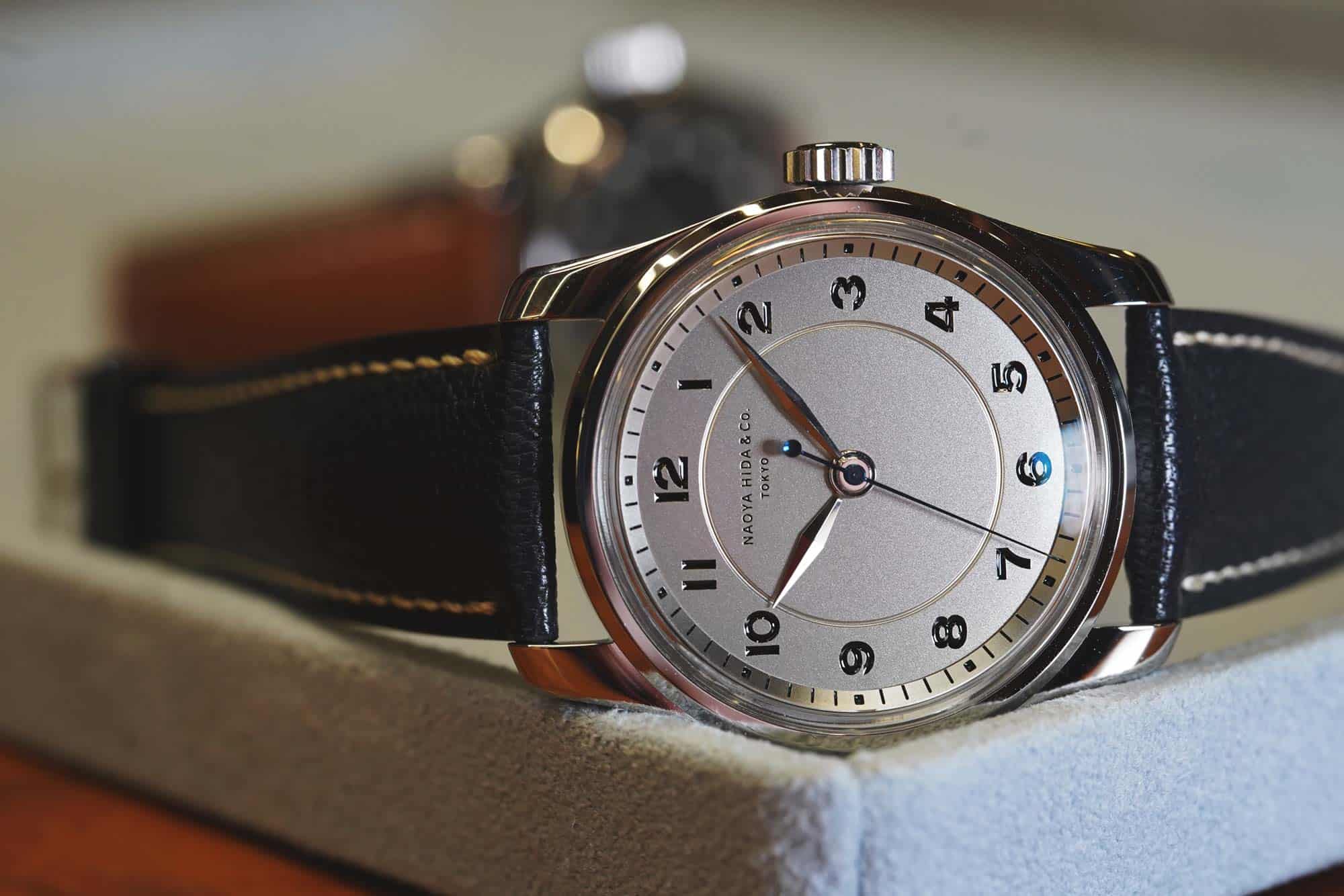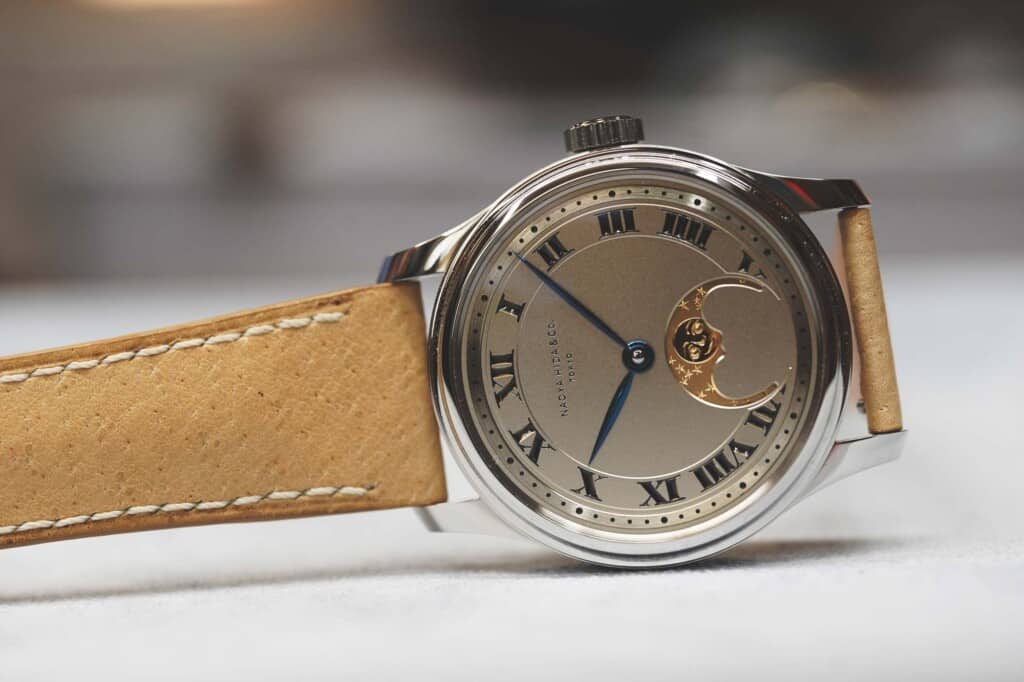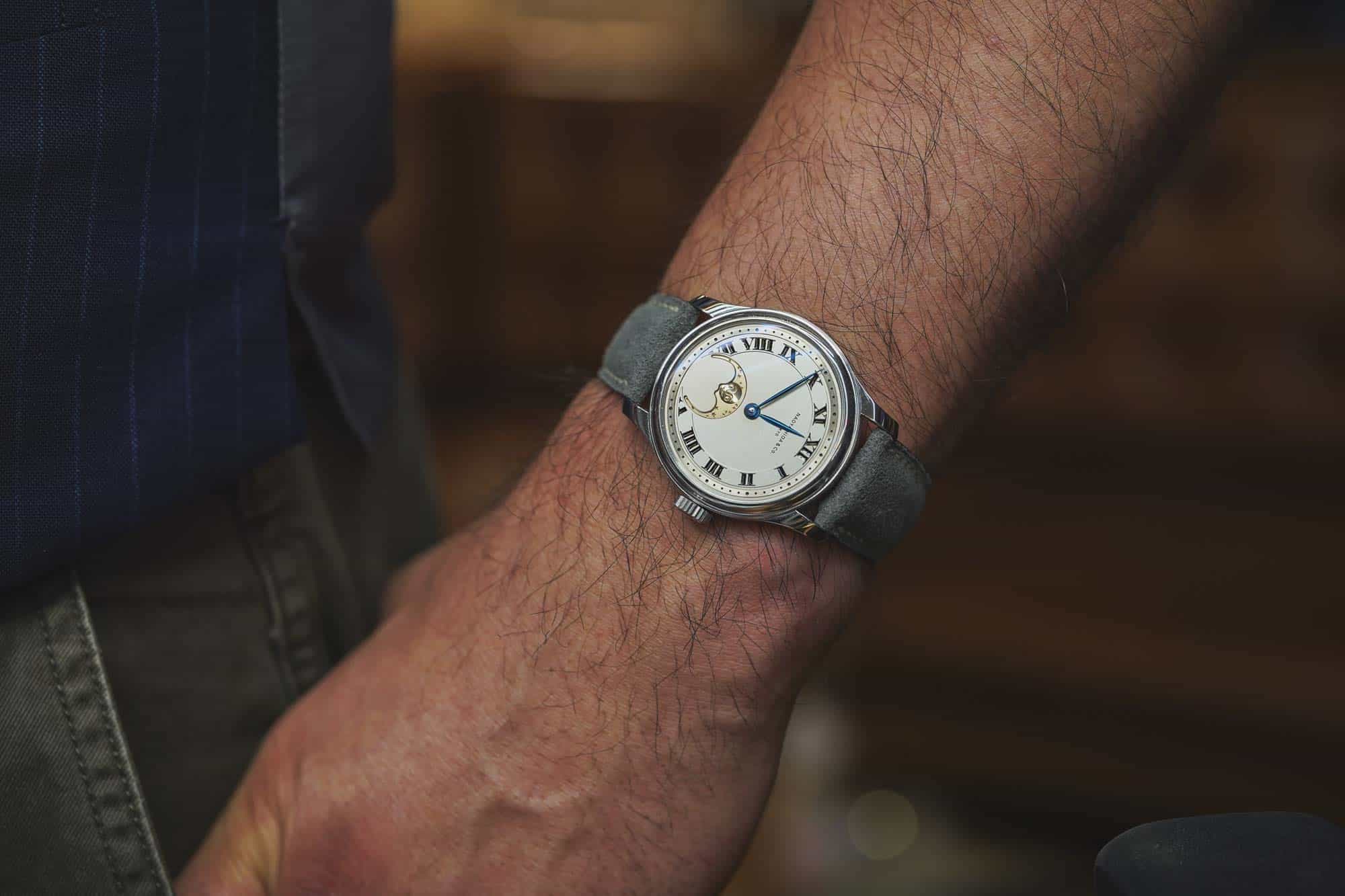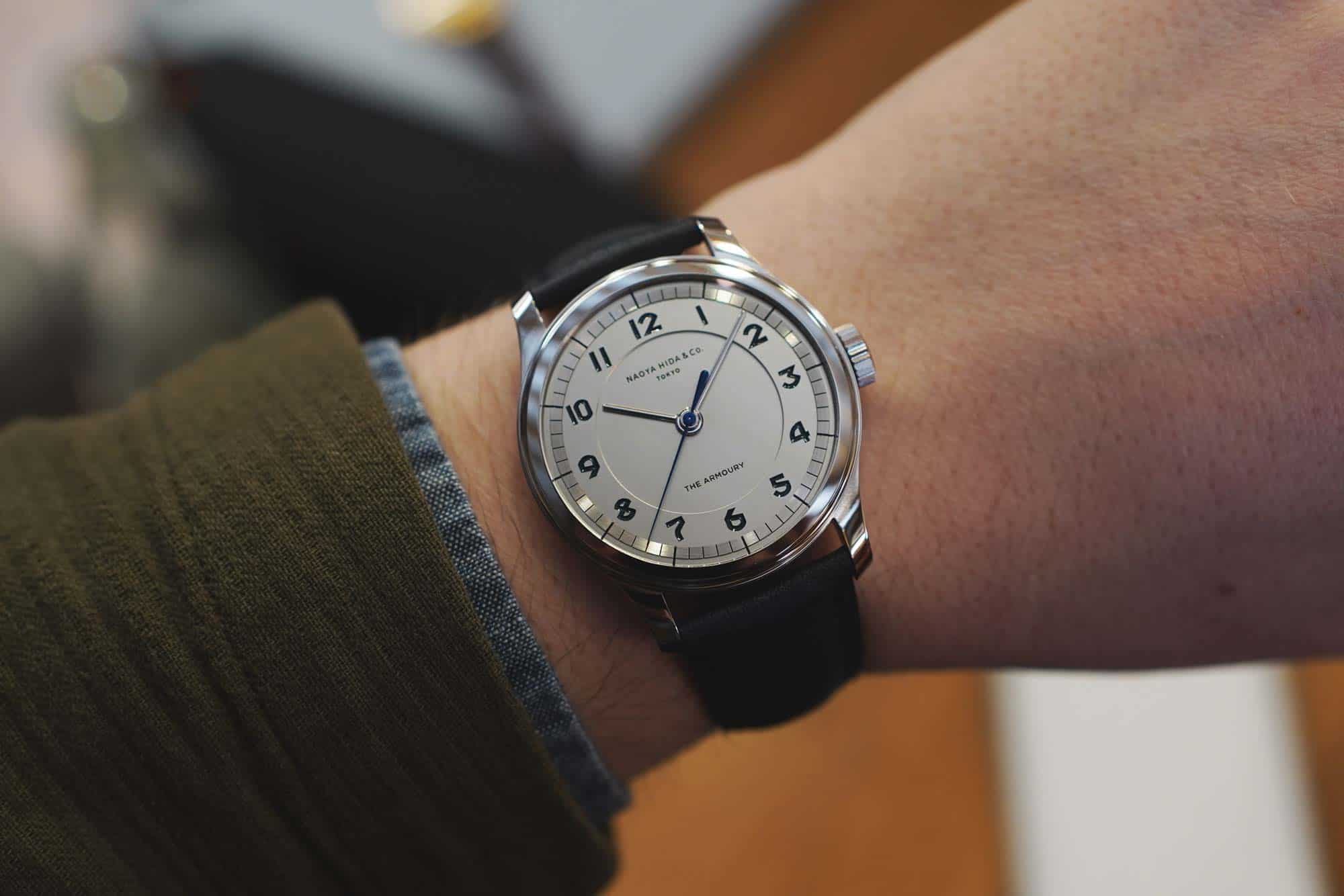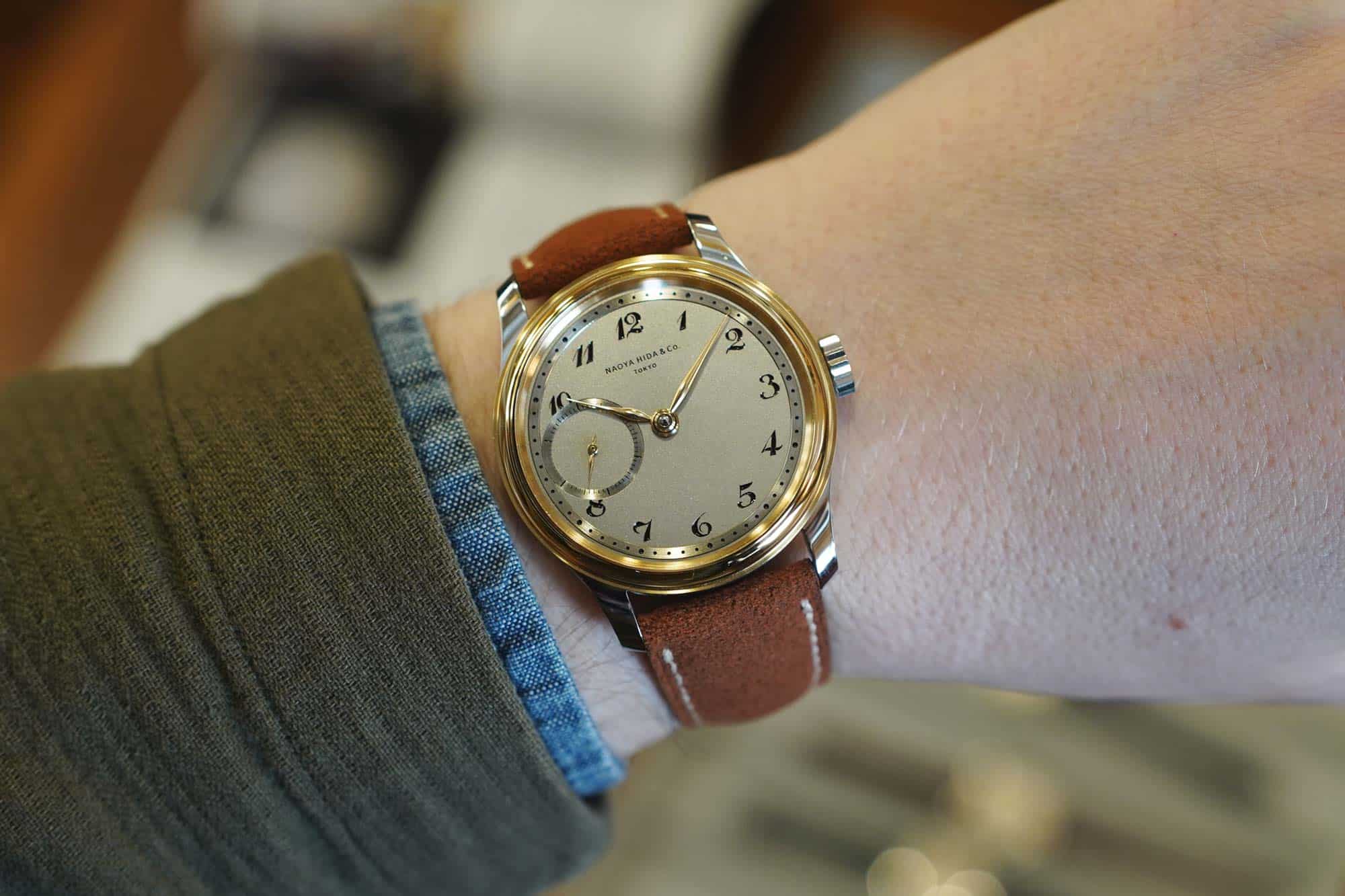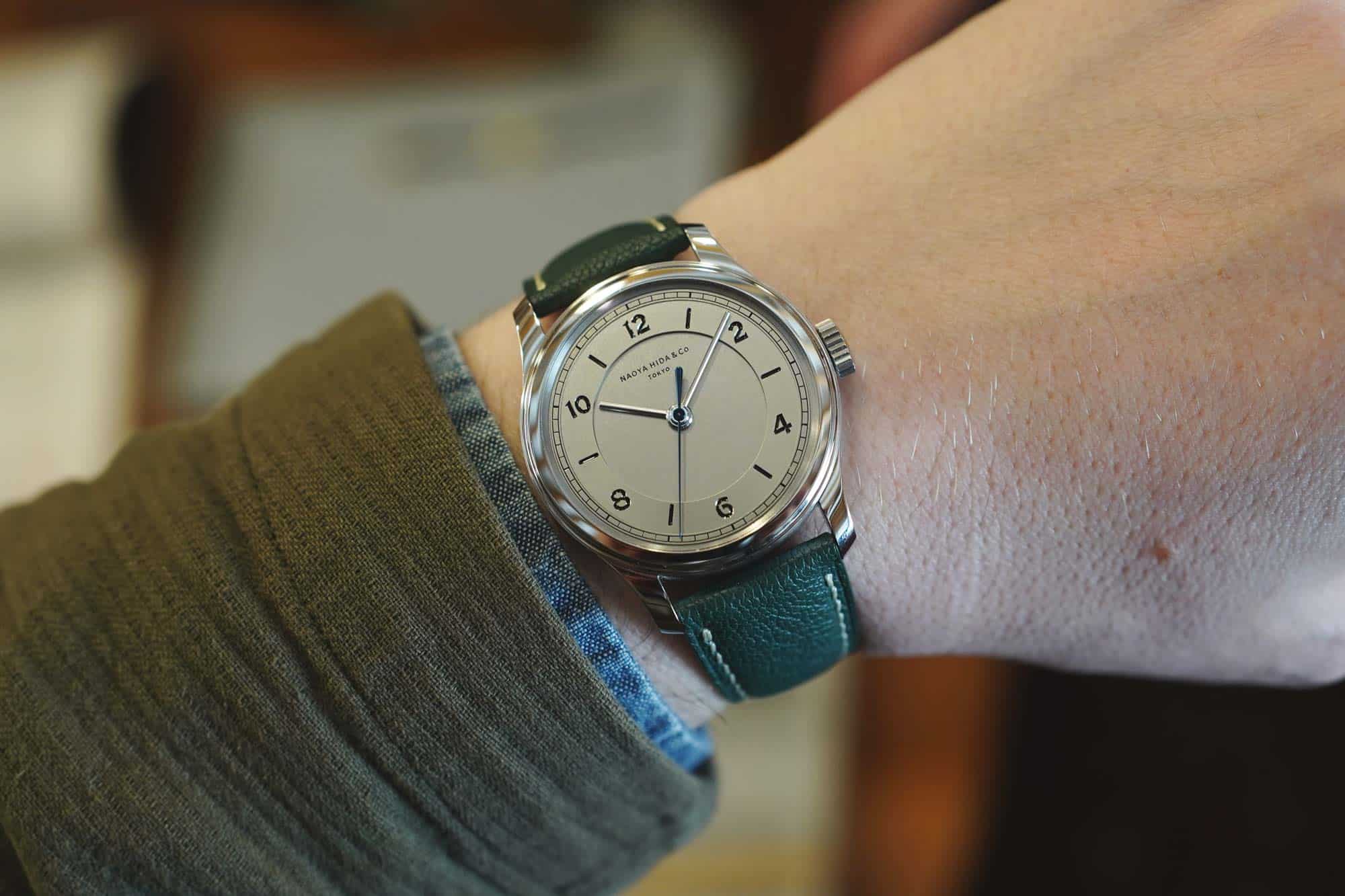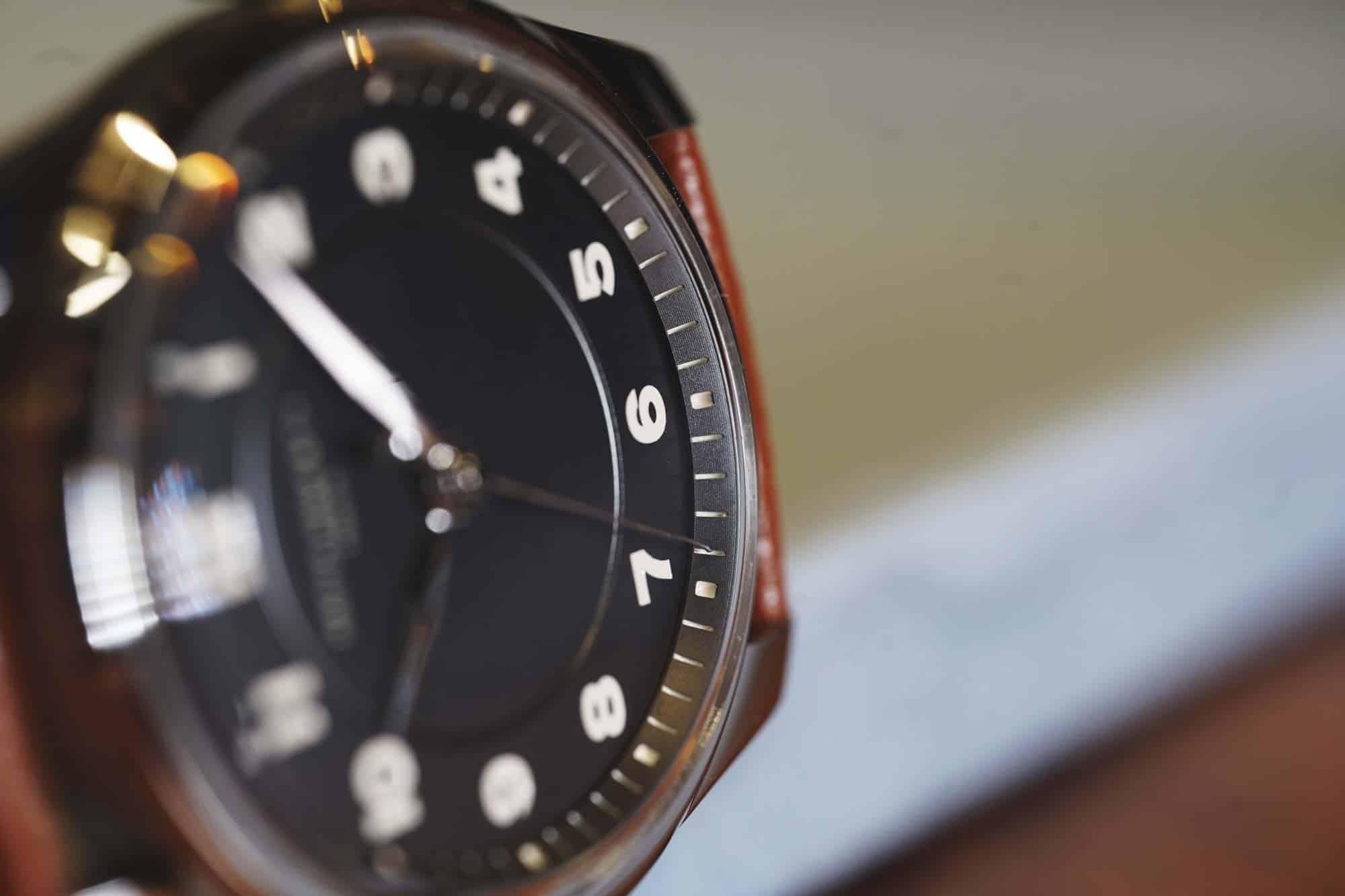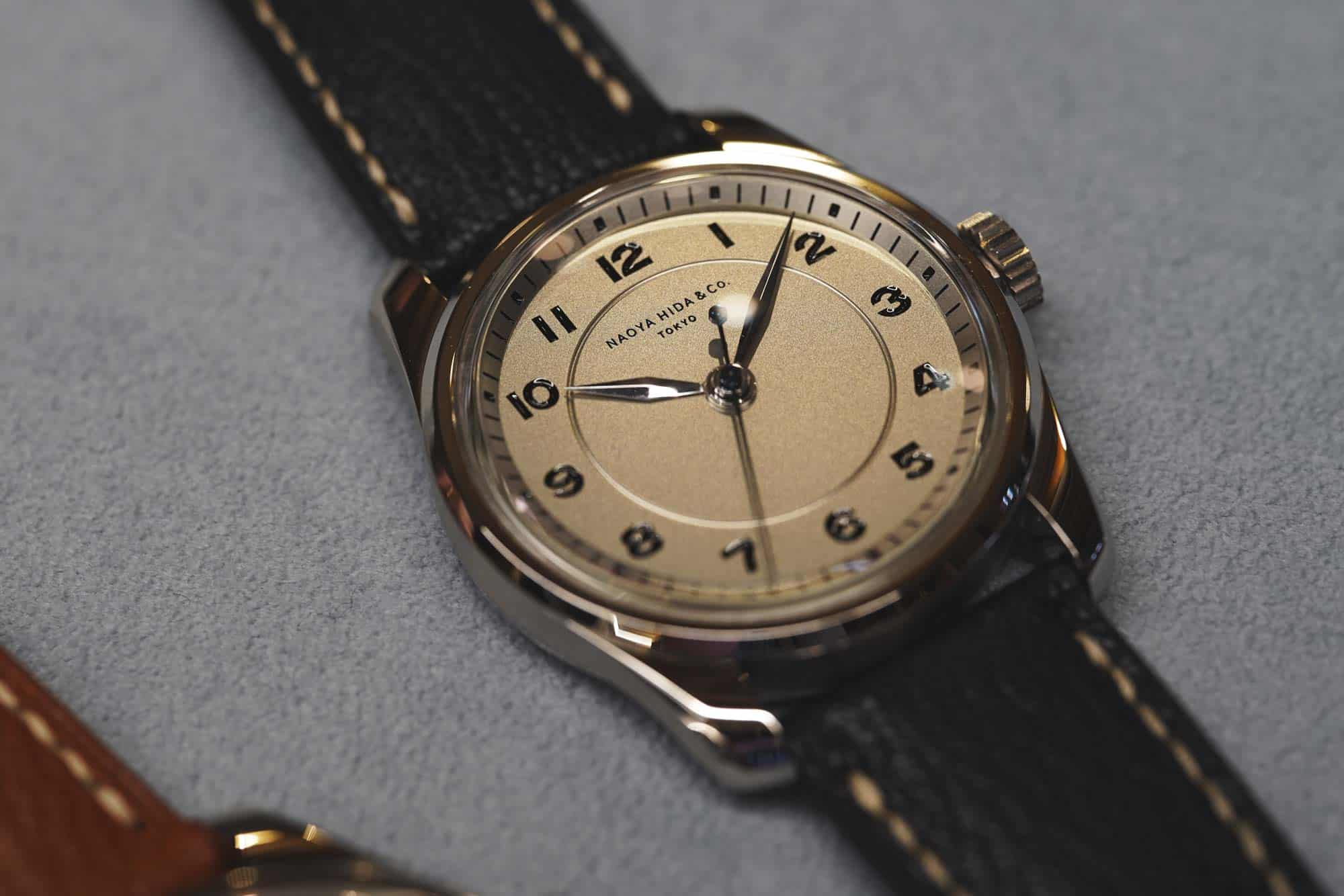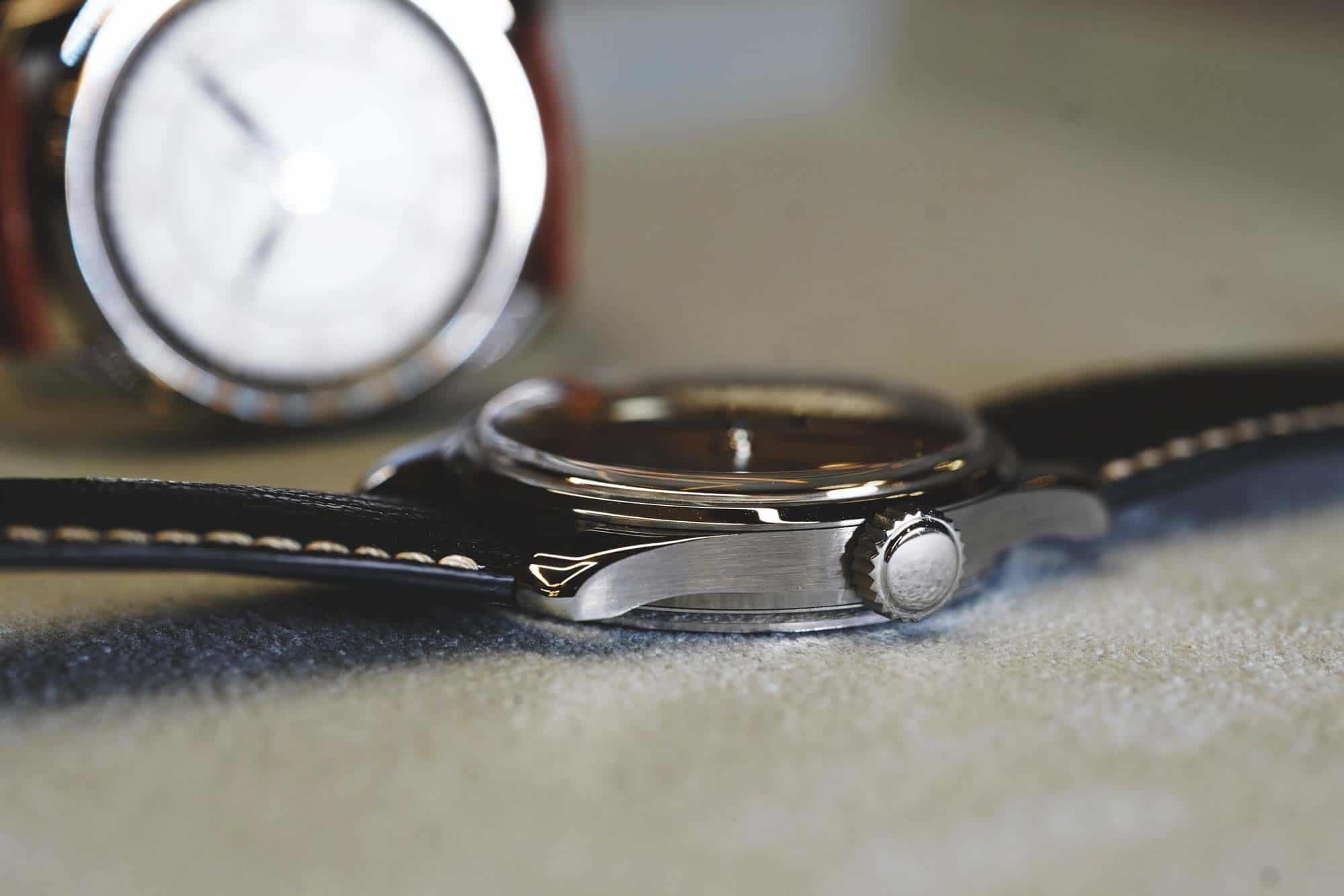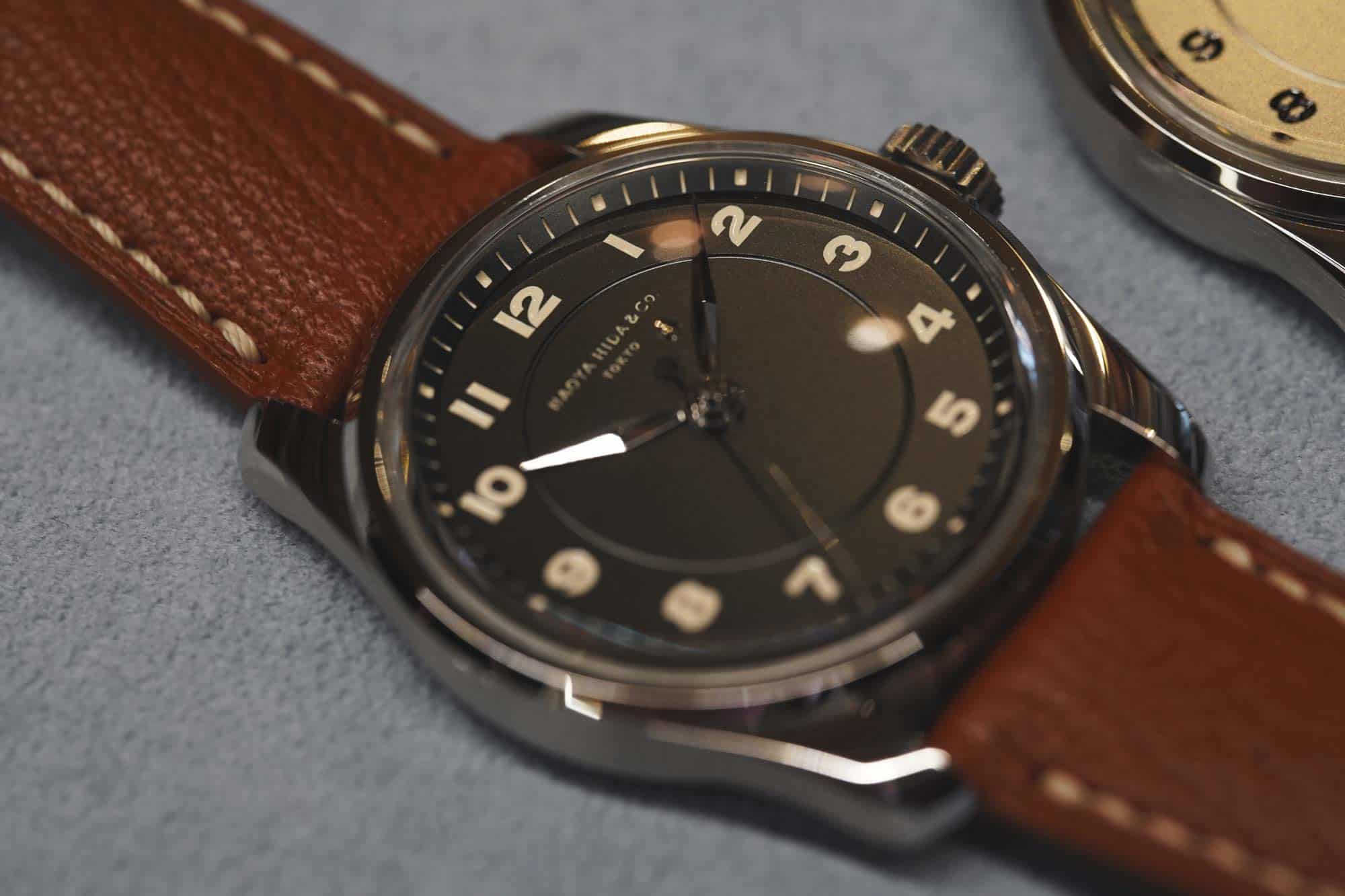It’s hard to imagine how fine a more or less simple steel watch can be. You’ve likely encountered high-end steel watches from the typical luxury houses that come to mind. For example, Omega, Rolex, or Grand Seiko make stunning steel watches with excellent finishing. It’s fair to ask yourself, how much better or different can finishing get? And then, if you’re lucky enough to have the opportunity, you get to see Naoya Hida’s watches, and you realize that a seemingly simple steel watch still has plenty of room for elevation.
The difference isn’t in broad strokes, it’s in the minutia. “Fit and finish” turned up that much more. Details are finished by hand for that wabi-sabi effect of subtle variations and vibrations that add life. I once heard a person refer to something as having “gravity” to define the “X” factor that sets something of quality apart. As a physical, unavoidable force of attraction, this makes sense. While it might take a loupe to truly appreciate the subtleties of the finish on a Naoya Hida watch, it pulls you in with a force beyond your control.
I’ve had the experience of seeing the Naoya Hida watches twice now, about a year apart from each other, both times at Mark Cho’s Armoury location in NYC’s Tribeca. The first time was certainly exciting, but the second, which was just a few weeks ago, was revelatory. Perhaps that is because Mr. Hida, and his engraver Keisuke Kano, came to the US to present the watches in person. The added excitement of hearing the creator of the brand explain his vision, as well as his master engraver explain the extraordinary effort each watch takes, added levels to the “gravity” of each watch seen.
The presentation began with a tour of the existing models, many of which had slight alterations made from the previous year’s versions. For those unfamiliar with the brand, given the labor of creating the hand-engraved German silver dials, each model is limited to around 10 – 20 pieces annually. As such, making minor changes annually isn’t a matter of retooling or major visual modifications, so much as learning from their own process. Lines or type might get wider or deeper, fill colors slightly altered, different straps in use, etc.









 Featured Videos
Featured Videos




